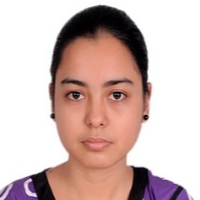International Journal of Computer Network and Information Security (IJCNIS)
IJCNIS Vol. 8, No. 10, 8 Oct. 2016
Cover page and Table of Contents: PDF (size: 735KB)
On Statistical Behavioral Investigations of Body Movements of Human Body Area Channel
Full Text (PDF, 735KB), PP.29-36
Views: 0 Downloads: 0
Author(s)
Index Terms
Channel Model, IEEE 802.15.6, Rake Receiver, Ultra wideband (UWB), Wireless Body Area network (WBAN)
Abstract
A statistical characterization of body surface to external communication of Body Area Network is investigated for movement of human body in different directions i.e. 00, 900, 1800 and 2700, with respect to the transmitting antenna. The NICT’s statistical model is used to carry out measurement in ultra-wideband (UWB) range. The important parameters that capture the variability of the delay profile over the channel e.g. mean delay spread and RMS delay spread of power delay profile (PDP) is presented. The probability density (PDF) and cumulative distribution (CDF) function of the output signal to noise ratio (SNR) have been computed. The performance of Selective Rake (S-Rake) and Partial rake (P-Rake) receiver structure that employs maximal-ratio combining (MRC) is investigated for varying number of fingers taps.
Cite This Paper
Sukhraj Kaur, Jyoteesh Malhotra, "On Statistical Behavioral Investigations of Body Movements of Human Body Area Channel", International Journal of Computer Network and Information Security(IJCNIS), Vol.8, No.10, pp.29-36, 2016. DOI:10.5815/ijcnis.2016.10.04
Reference
[1]Sukhraj Kaur, Rachita Sharma and Jyoteesh Malhotra, “Simulative Investigations of Wireless Body Area Network through Varied Channel Conditions”, International Journal of Computer Applications (0975 – 8887), Volume 74– No.7, July 2013.
[2]Zimmerman, T. G., “Personal area networks: near-?eld intrabody communication”, IBM Systems Journal, 35(3.4), pp. 609–617, 1996. doi: 10.1147//sj.353.0609.
[3]Yazdandoost, K. Y., & Sayrafian, P. K., “Channel Model for Body Area Network (BAN)”, IEEE802.15.6 technical contribution, 2009. doc.: IEEE P802.15-08-0780-09-0006.
[4]Proakis, J. G., Digital Communications (4th edition). New York: McGraw-Hill, 2001.
[5]Qui, R. C., Lui, H., & Shen, X. (S.), “Ultra-wideband for multiple-access communications”, IEEE Communication Magzine, vol. 43, pp. 80-87, 2005.
[6]M. Sudjai, L. Chung. Tran & F. Safaei, “Performance analysis of STFC MB-OFDM UWB in WBAN channels”, 23rd IEEE International Symposium Personal, Indoor and Mobile Radio Communications (PIMRC 2012), pp. 1710-1715, 2012. doi: 10.1109/PIMRC.2012.6362625.
[7]Wang, J., & Wang, Q., Body area communications- Channel Modeling, Communications and EMC, 2013 edition. Singapore: Wiley, IEEE Press.
[8]Dr. Jyoteesh Malhotra, “Error Rate Performance in High Data Rate UWB Channels for Wireless Personal Area Networks”, International Journal of Computer Applications, vol.10, no.6, pp. 31–37, 2010.
[9]JJW Siemons, Measurement Based Indoor Radio Channel Model (Koninklijke Philips Electronics, 2000)
[10]Lingli Xia, Stephen Redfield and Patrick Chiang, “Experimental Characterization of a UWB Channel for Body Area Networks”, EURASIP Journal on Wireless Communications and Networking, 2011. doi:10.1155/2011/703239.
[11]Lu Shi, Ming Li, Shucheng Yu and Jiawei Yuan, “BANA-Body area network authentication exploiting channel characteristics”.
[12]Jyoteesh Malhotra, “Simulative Investigations on Low Data Rate IEEE 802.15.4a UWB Channel for Wireless Personal Area Networks”, International Journal of Information and Telecommunication Technology (IJITT), Vol. 2, No. 1, pp. 57-65, 2010.
[13]Miniutti, D., Hanlen, L., Smith, D., Zhang, A., Lewis, D., Rodda, D., & Gilbert, B. (2008), “Narrowband On-Body to O?-Body Channel Characterization for Body Area Networks”, IEEE802.15.6 technical contribution. doc.: IEEE P802.15-08-0559-00-0006.
[14]Win, M. Z., & Scholtz, R. A., “On the robustness of ultra -wide bandwidth signals in dense multipath environments”, IEEE Communication Letter, vol. 2, 51–53, February, 1998. doi: 10.1109/4234.660801.

